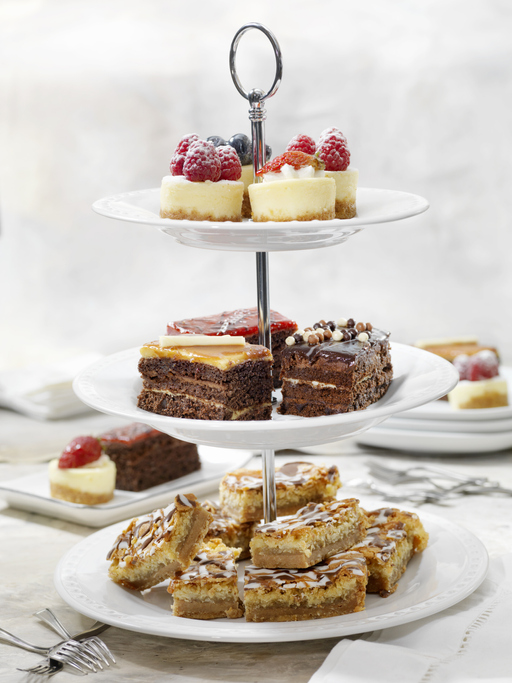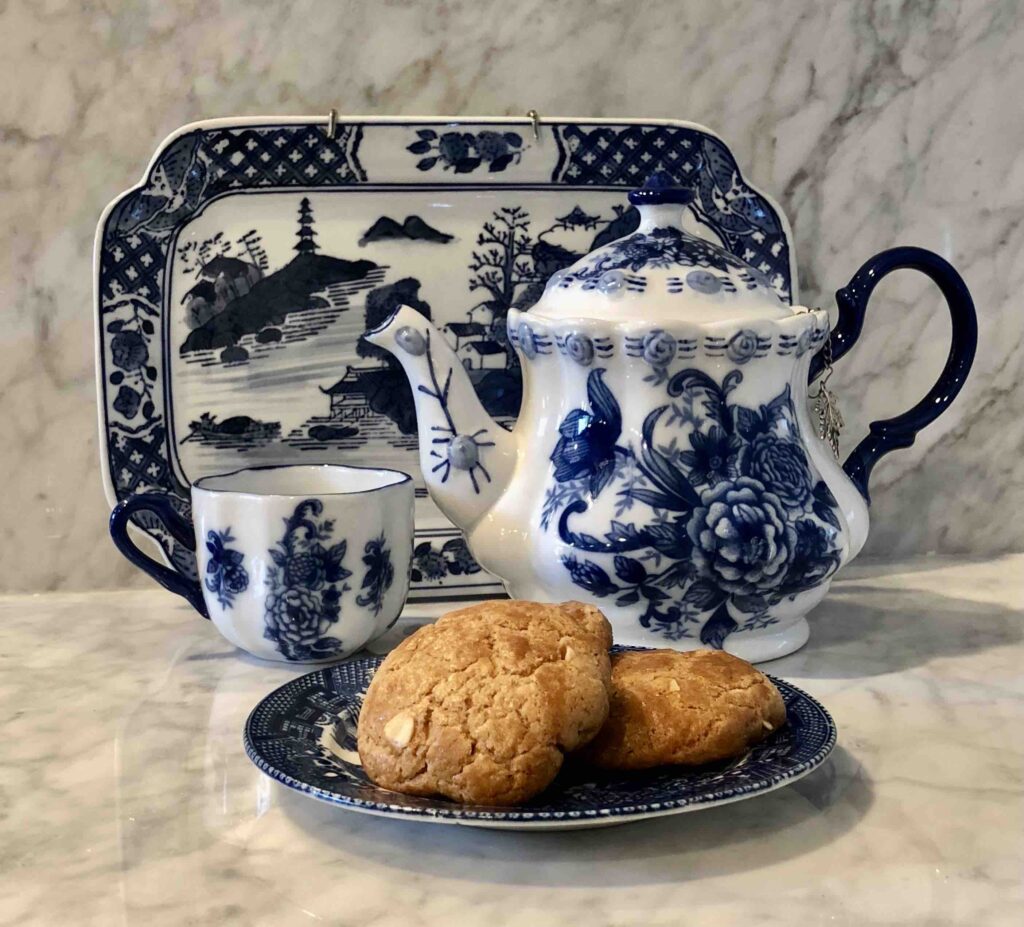
Throw Her a Tea Party of Her Own
While tea has been consumed in China for thousands of years, the idea of the tea party is a relatively late custom we have adopted from Britain. (Pretty ironic, since America’s first “tea party” involved throwing the stuff into the harbor as a political protest against British taxes.)
While tea restaurants abound all throughout Orange County, for Mother’s Day why not throw Mom a tea party of her own?
According to Chinese legend, tea was discovered in 2737 BCE when Emperor Shennong was sitting beneath a tree and a gust of wind blew the leaves into a cauldron of boiling water his servant was preparing. Tea arrived in England from China in the mid-1600s, and by the late 1700s even the poorest masses were drinking it.
The Duchess of Bedford, a close friend of Queen Victoria, is credited with starting the modern tradition of afternoon tea in the 1840s. At the time most British people ate two main meals: a large early breakfast and an 8 p.m. dinner, with just a light lunch in between.
As the story goes, the duchess complained of a “sinking feeling” in the late afternoon and requested a pot of tea and some bread and butter and cakes be brought to her boudoir. The practice quickly spread, first throughout high society where it became a fashionable social event, and then into the middle classes.
Interestingly, “high tea,” which today we think of as an elegant affair, was originally a meal for the working classes, which they consumed sitting on “high” stools or standing up.
The impact of Netflix’s “Bridgerton” has made the elegant tea party even more popular. Now is the time to bring out your best china, silver and linens and dress accordingly. It is traditional to serve sweets, scones or biscuits—with clotted cream and jam, of course—and bite-size sandwiches. Cucumber, egg salad, tuna and smoked salmon are popular choices, but trimming the crusts is de rigueur, as the Duchess of Bedford insisted on it!
Serve a variety of teas, including an herb tea for the caffeine impaired and well-known black tea options like English Breakfast or Earl Grey. For an unusual addition and conversation starter include pu-erh tea, considered by many to be the “king of teas,” which I discovered through Bowers Museum’s book club. We were discussing Lisa See’s novel “The Tea Girl of Hummingbird Lane,” the story of Li-Yan, who lives in the mountains of China’s Yunnan Province, where her community has been farming pu-erh tea for generations. To enhance our experience, Linda Louie, owner of Bana Tea Company, was invited to introduce us to this highly prized beverage and treat us to a tasting.
“What inspired Lisa See to write this book,” Louie told us, “[was] she was at a dinner and heard a tea master talk about pu-erh and how this one case was auctioned off for tens of thousands of dollars.” Louie and See met through mutual friends in 2013, and the following spring See accompanied Louie on her tea-sourcing excursion to Yunnan. (Find photos of the trip at banateacompany.com as well as teas for purchase.)
“Pu-erh is very well known and highly sought after in Asia, but not very well known in the West,” Louie noted. “Yunnan is a hot spot of biodiversity for tea with a perfect climate, soil and conditions to grow tea. Some trees are hundreds of years old up to several thousand years old. You cannot find another food or beverage as original as pu-erh. It is one of the very few teas that can be aged like fine wine, a feature that was discovered by accident. Legend has it that in the 7th century during the Tang Dynasty, Tibet needed tea, and China needed warhorses, so they traded.
In the seven months to a year it took to get to Tibet, they encountered monsoons, so the tea leaves would get wet and ferment. By the time it got to its destination it had a miracle taste, more mellow, so they realized you could age the tea as long as you want. Pu-erh earned the name ‘drinkable antique.’ Aged Pu-erh is highly sought after, first, because of its rarity, like any antique. Also, tea made from the old trees produces a feeling of relaxation. It’s an entire sensory experience.”
I asked Louie to recommend a snack to pair with the tea, and she suggested a plain cookie, perhaps with nuts. I found the delightful almond flavored cookies featured here on the Chinese cooking site omnivorescookbook.com, and they would make a lovely addition to your sweet display.
King Arthur Mini Cheesecakes
Mini cheesecake pans may be purchased at a restaurant supply store or on line.
Yield: 12
Crust
1 cup King Arthur unbleached all-purpose flour
1/3 cup King Arthur almond flour or 1/3 cup ground almonds
2 tablespoons light brown sugar or dark brown sugar, packed
1/4 teaspoon salt
6 tablespoons butter, cold
Batter
1 8-ounce package cream cheese, room temperature
1/4 cup granulated sugar
2 tablespoons heavy cream or sour cream, at room temperature
1 large egg, at room temperature
1 teaspoon pure vanilla extract
Optional swirl-ins
1 ounce bittersweet or semisweet chocolate wafers or chocolate chips, melted
2 tablespoons good-quality jam, warmed slightly and stirred until smooth
- Crust: Preheat oven to 425°F. Whisk together flour, almond flour, sugar, and salt. Cut in butter with pastry blender or two knives, or rub together with your fingers until mixture resembles coarse sand. Sprinkle in a teaspoon or two of water if dough is too crumbly to hold together when squeezed. Divide crumbs among 12 cups of a bite-size cheesecake pan. Press them firmly into bottoms and about 1/2” up sides. Bake in preheated oven for 8 to 10 minutes, until set and just beginning to color. Remove from oven and let cool. Reduce oven temperature to 325°F.
- Batter: In a medium-sized bowl, beat cream cheese and sugar until smooth. Add cream, egg and vanilla; mix well. Spoon batter into cooled crusts, using about 2 tablespoons in each. Top with a scant half teaspoon melted chocolate or jam, if using, and use a knife blade to swirl it into batter.
- Bake cheesecakes for 18 to 20 minutes, until just set. Remove from oven and let cool for at least 30 minutes—tops will sink slightly. Use a knife to gently loosen edges, then carefully invert pan and push cheesecakes out. Immediately turn cheesecakes right-side up and chill. To remove metal plates before serving, run blade of table knife under hot water to warm it, then run knife between crust and metal disk to free up cheesecake.
Just before serving, garnish with fresh berries or pie filling and whipped cream, if desired.

Photo Courtesy of Jill Foran
Chinese Almond Cookies
Yield: 18-20
8 tablespoons (1 stick) unsalted butter, at room temperature
1/4 cup granulated sugar
1/4 cup light brown sugar
1/4 teaspoon almond extract
1 large egg, beaten, divided
1 1/2 cups all-purpose flour
1 teaspoon baking powder
1/2 teaspoon baking soda
Pinch salt
1/2 cup sliced almonds
- Preheat oven to 350 F. Line cookie sheet with parchment paper.
- In medium bowl, whisk together flour, baking powder, baking soda, and salt.
- In large bowl combine butter and both sugars with hand mixer on low speed until smooth. Add vanilla and 2 tablespoons of egg. (Reserve remainder for egg wash.) Keep mixing until fully combined. Mix in dry ingredients until it forms pebbles and starts to come together (like pie dough). Switch to a spatula and hand-mix until combined. Mix in almonds.
- Scoop about 1 1/2 tablespoons dough per cookie and roll into a ball. Flatten dough into a round disk, about 1/3-inch in thickness and place onto cookie sheet, 1 inch apart. Mix remaining egg with 1 teaspoon water for egg wash. Brush thin layer of egg wash on each cookie; bake until golden brown, about 18-20 minutes Watch that bottoms do not burn.
- Remove cookies from oven and place baking sheet on rack for 5 minutes. Transfer cookies onto rack to cool.
Adapted from “China: The Cookbook” (Phaidon Press) by Kei Lum Chan and Diora Fong Chan
Jlife Food Editor Judy Bart Kancigor is the author of “Cooking Jewish” (Workman) and “The Perfect Passover Cookbook” (an e-book short from Workman), a columnist and feature writer for the Orange County Register and other publications and can be found on the web at www.cookingjewish.com.









